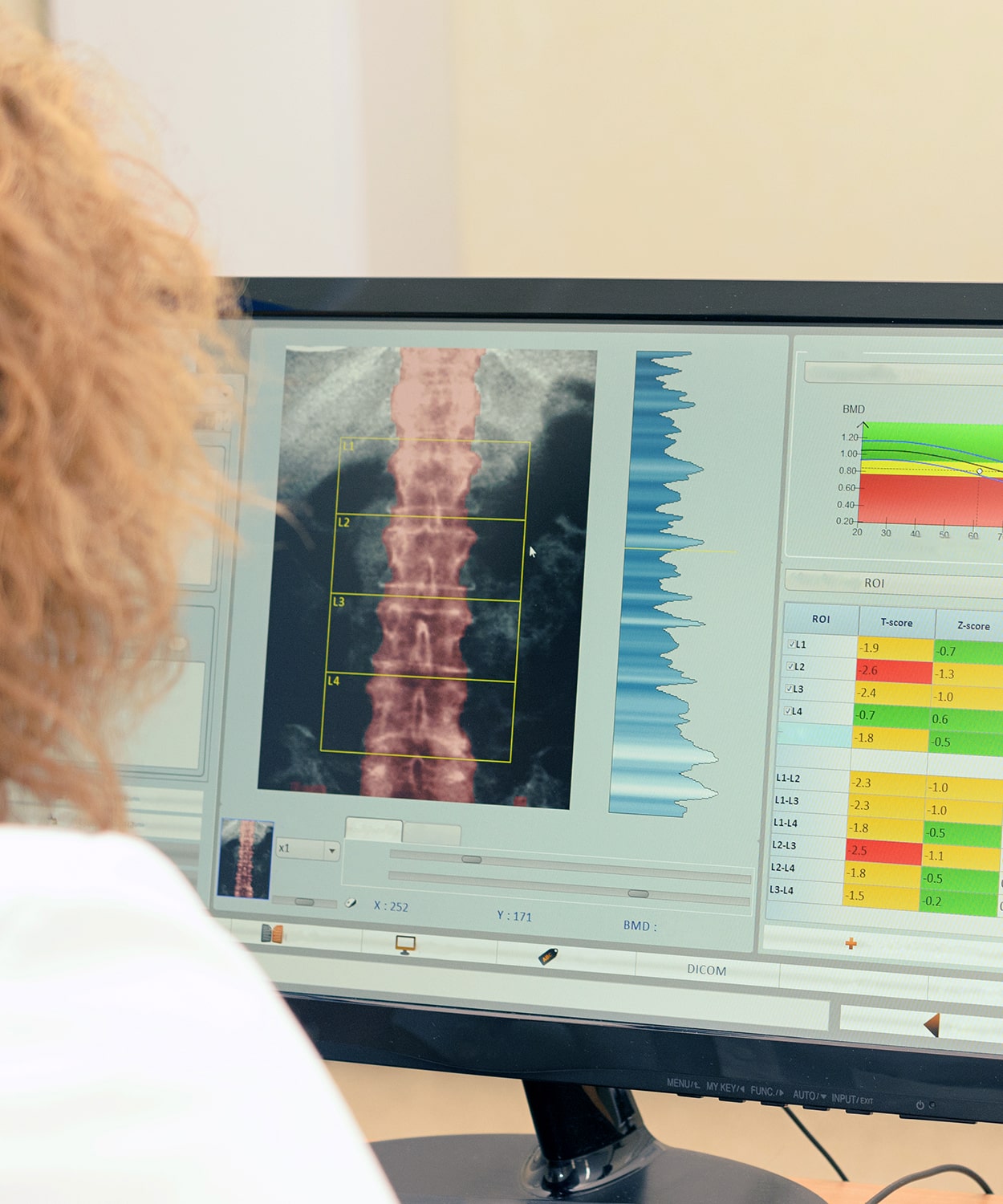How does a Bone Density (DEXA) scan work?
A bone density scan, which is known as a BMD test, DEXA scan, or DXA scan, is a low-dose X-ray scan. This type of scan evaluates the number of minerals and calcium within bones, and can also measure the thickness (bone mass) and strength (bone density) of bones.
This scan is recommended for women over age 65 as well as for men over age 70. If you’ve experienced multiple bone fractures, have very low body weight, or have shortened in height by more than half an inch in the last year, it may be recommended to have a DEXA scan done to check for osteoporosis or osteopenia.
Individuals who have been on long-term steroid medications or have certain medical conditions that may affect bone health, such as rheumatoid arthritis or hyperthyroidism, may also benefit from a bone density scan. Early detection of osteoporosis or osteopenia through DEXA scans allows for timely intervention and management strategies to help prevent fractures and maintain bone health. It is essential to consult with a healthcare professional to determine if a bone density scan is appropriate for you.
What it used for?
A bone density scan may be used to:
Diagnose osteoporosis or osteopenia:
It is common for bones to thin as we age. Osteopenia (low bone mass) may lead to the condition known as Osteoporosis, in which bones become very brittle and thin. People with osteoporosis have a higher risk of bone fractures.
Predict the risk of future bone fractures:
As noted above, brittle and thin bones can lead to a greater risk of bone fractures. A bone density scan helps determine how susceptible a patient may be to future bone fractures. This scan can be helpful for building safety guidelines for patients at home and in their daily lives in order to decrease the chances of having a bone fracture.
Determine whether osteoporosis treatments are working or not:
Most treatments for osteopenia and osteoporosis are targeted at remineralizing the bones or decreasing further demineralization. DEXA scans can be used to check the treatment progress and to determine whether treatment plan changes are needed.
